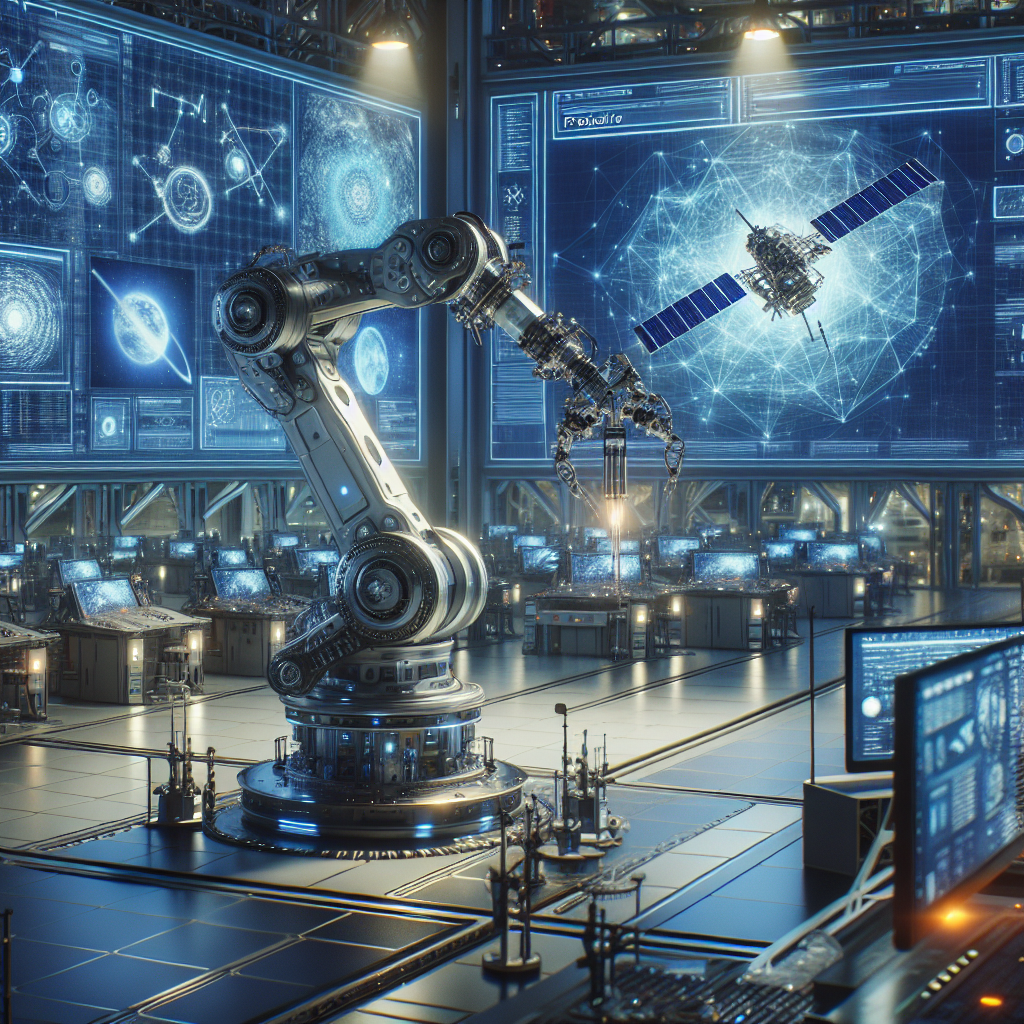Introduction
Artificial Intelligence (AI) has revolutionized various industries, including aerospace. The integration of AI in aerospace has led to advancements in space exploration and research through robotics and machine learning. This article will explore how AI development is transforming the aerospace industry, enabling new capabilities and possibilities for space missions.
Advancements in Space Exploration
AI has significantly impacted space exploration by enabling autonomous decision-making and problem-solving in spacecraft and robotics. One of the key areas where AI has been applied is in autonomous navigation systems for spacecraft. AI algorithms can analyze data from sensors and cameras to make real-time decisions about navigation, avoiding obstacles and ensuring safe travel through space.
Robotic missions to other planets, such as Mars, have benefited greatly from AI technology. For example, the Mars Rover Curiosity uses AI to analyze images and make decisions about where to explore next. This autonomous capability allows the rover to operate more efficiently and effectively without constant human intervention.
AI has also been used in space telescopes to analyze vast amounts of data and identify interesting celestial objects. For example, the Kepler Space Telescope used AI algorithms to detect exoplanets by analyzing changes in brightness from distant stars. This automated process allowed scientists to discover thousands of new planets, revolutionizing our understanding of the universe.
Machine Learning in Aerospace Research
Machine learning, a subset of AI, has also played a crucial role in aerospace research. Machine learning algorithms can analyze large datasets to identify patterns and make predictions, enabling scientists to gain new insights into complex systems.
In aerospace research, machine learning is used to analyze data from satellites, aircraft, and other sources to improve weather forecasting, air traffic control, and aircraft performance. For example, machine learning algorithms can predict weather patterns based on historical data, allowing for more accurate forecasts and better decision-making for flight planning.
Machine learning is also being used to optimize aircraft design and performance. By analyzing data from flight tests and simulations, machine learning algorithms can identify ways to improve fuel efficiency, reduce emissions, and increase safety. This research is crucial for developing next-generation aircraft that are more sustainable and efficient.
AI in Space Missions
AI has enabled new capabilities in space missions, allowing for longer and more complex missions to explore the far reaches of our solar system and beyond. For example, AI algorithms can optimize the operation of spacecraft systems, such as power usage and communication, to extend mission lifetimes and improve overall performance.
AI is also being used to support human space missions, such as the Artemis program to return astronauts to the Moon and eventually send humans to Mars. AI can assist astronauts with tasks such as navigation, communication, and resource management, making these missions safer and more efficient.
In addition, AI-powered robots are being developed for space exploration to perform tasks that are too dangerous or difficult for humans. For example, NASA’s Astrobee robot is designed to assist astronauts on the International Space Station with routine tasks, freeing up their time for more critical activities.
FAQs
Q: What are the benefits of using AI in aerospace?
A: AI enables autonomous decision-making, problem-solving, and data analysis in spacecraft and robotics, leading to more efficient and effective space missions. AI also supports human space missions by assisting astronauts with tasks and improving overall mission safety.
Q: How is machine learning used in aerospace research?
A: Machine learning is used to analyze large datasets from satellites, aircraft, and other sources to improve weather forecasting, air traffic control, and aircraft performance. Machine learning algorithms can identify patterns and make predictions to gain new insights into complex systems.
Q: What role does AI play in space missions?
A: AI enables new capabilities in space missions, such as optimizing spacecraft systems, supporting human space missions, and developing AI-powered robots for space exploration. AI technology is crucial for advancing space exploration and research.
Conclusion
AI development in aerospace is advancing space exploration and research through robotics and machine learning. By enabling autonomous decision-making, problem-solving, and data analysis, AI technology is transforming the aerospace industry and opening up new possibilities for space missions. From autonomous navigation systems for spacecraft to machine learning algorithms for weather forecasting and aircraft design, AI is revolutionizing the way we explore the universe. As we continue to develop and integrate AI in aerospace, we can expect even more exciting advancements in space exploration and research in the years to come.

